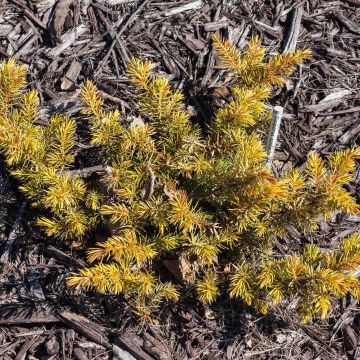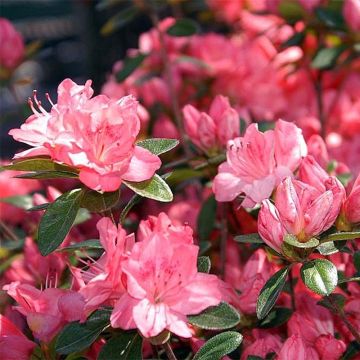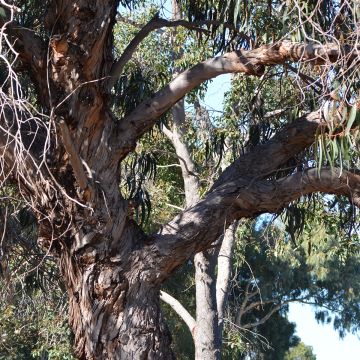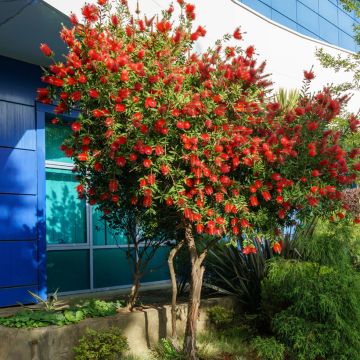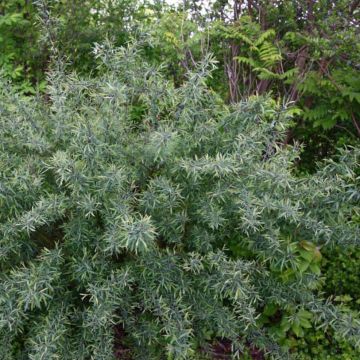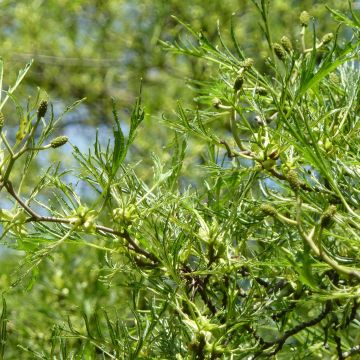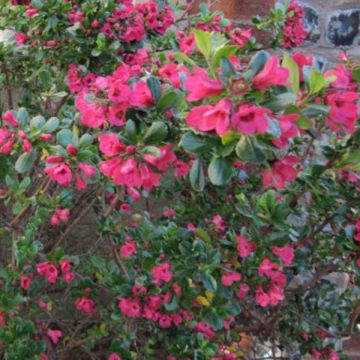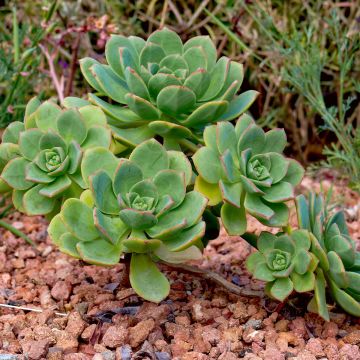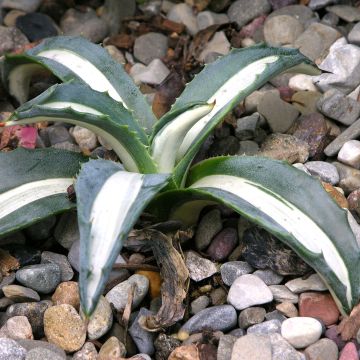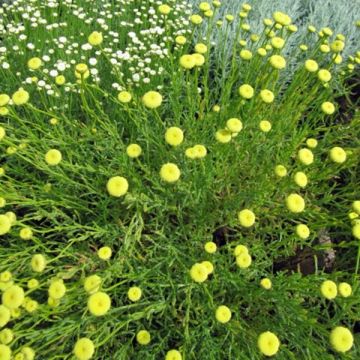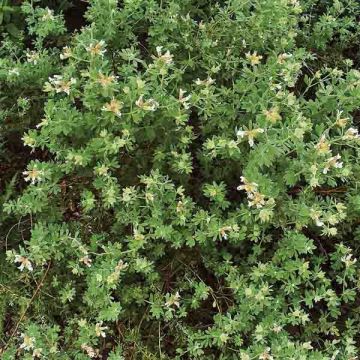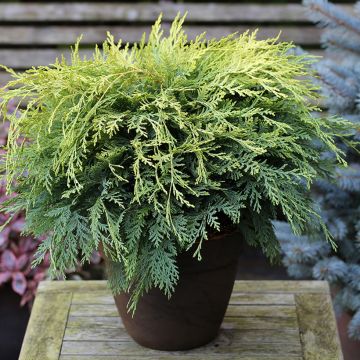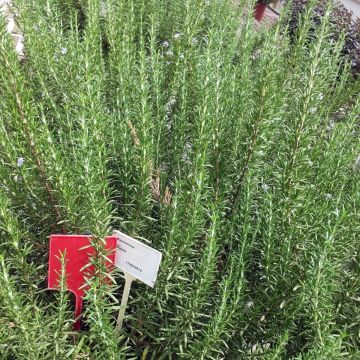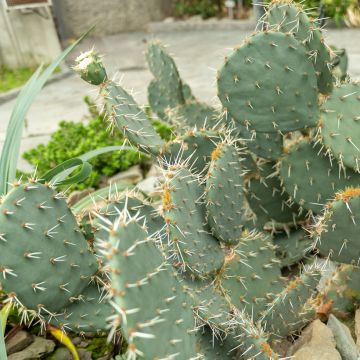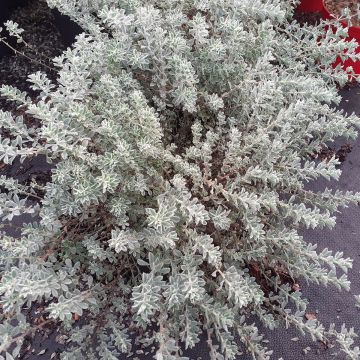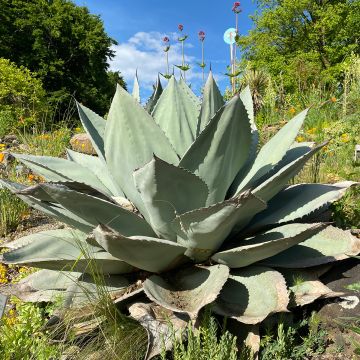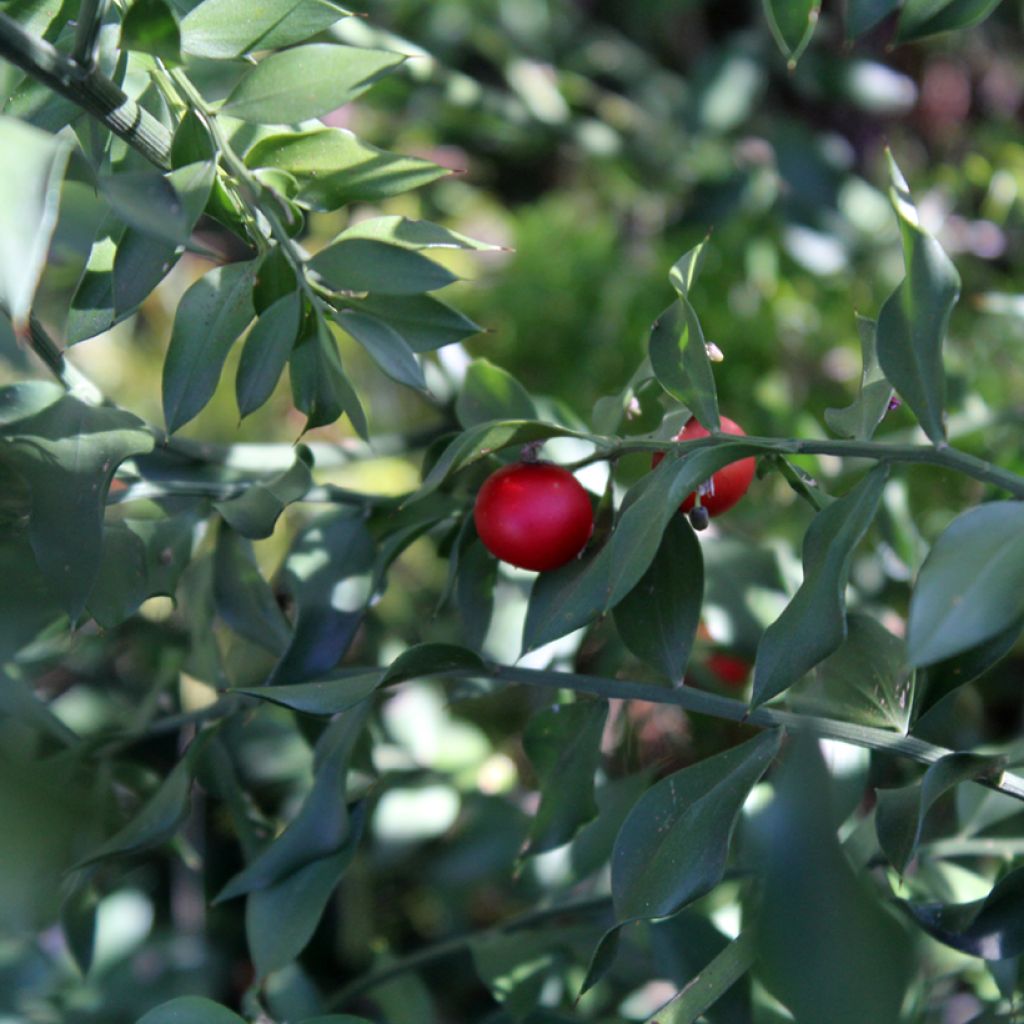

Ruscus aculeatus
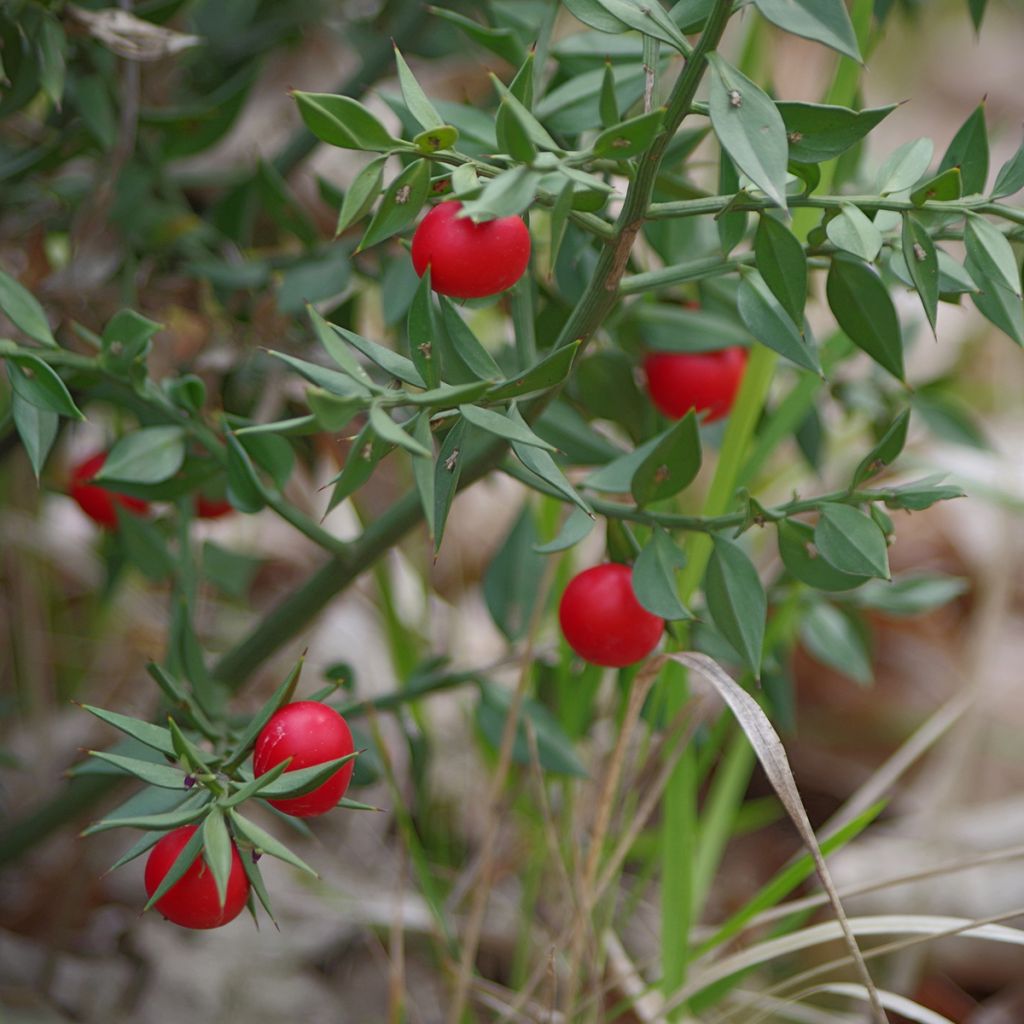

Ruscus aculeatus
Ruscus aculeatus
Ruscus aculeatus
Butcher's Broom, Box Holly, Knee Holly, Knee Holm, Knee Hull, Kneeholy, Pettigree, Pettigrue, Prickly box, Shepherd's Myrtle, Wild Myrtle
Planted in autumn 2021, this **young plant** has shown very little growth and has never formed any red balls. As a result, this **young plant** looks rather unsightly in the flower bed, which is a shame.
Gil, 03/06/2024
This item cannot be shipped to the selected country
Delivery charge from €5.90
More information
Schedule delivery date,
and select date in basket
This plant carries a 24 months recovery warranty
More information
We guarantee the quality of our plants for a full growing cycle, and will replace at our expense any plant that fails to recover under normal climatic and planting conditions.
From €5.90 for pickup delivery and €6.90 for home delivery
Express home delivery from €8.90.
Does this plant fit my garden?
Set up your Plantfit profile →
Description
Ruscus aculeatus, also known as Butcher's broom, is an evergreen subshrub well known for its medicinal properties. This cousin of asparagus has a well defined and original silhouette, with branches that remain vibrant green throughout the year. Its inconspicuous spring flowers give way to scarlet berries that persist throughout winter. The complementary colours of the foliage and berries create a particularly decorative effect.
Butcher's broom belongs to the family of asparagus, or lily. It is native to central and southern Europe. The growth of this bush is slow and its adult size will not exceed 0.75m in height and 1m (3ft) in width.
Butcher's broom is a small dioecious bush with a bushy, rounded habit. What appears as tough, glossy leaves are actually ovate cladodes, flattened stems that perform the same function as leaves, and they are topped with a formidable thorn. From April to September, small greenish flowers appear on and under these cladodes, followed from September on female plants by red berries about 1cm (1in) in diameter, that persist throughout winter.
Butcher's broom likes well-drained, preferably alkaline soil and thrives in shade or partial shade, away from the scorching sun. It requires no special maintenance. This bush has a place in every garden to brighten up a dark corner, under a sparse mass of trees or shrubs to decorate their base. Its slightly wild appearance pairs well with lilies and bleeding hearts, and its shiny green foliage enhances the delicate hues of fuchsias and columbines. In winter, it can be used to create floral arrangements in the house.
Butcher's broom is widely used in herbal medicine, where its vasoconstrictor and diuretic properties have been demonstrated. It was already used by Discorides, a Greek botanist and physician of the first century. It has had many other domestic uses, such as being rolled into a ball and used to scrub kitchen utensils, as a brush for chimney sweeps, and even as a rustic broom.
Report an error about the product description
Ruscus aculeatus in pictures
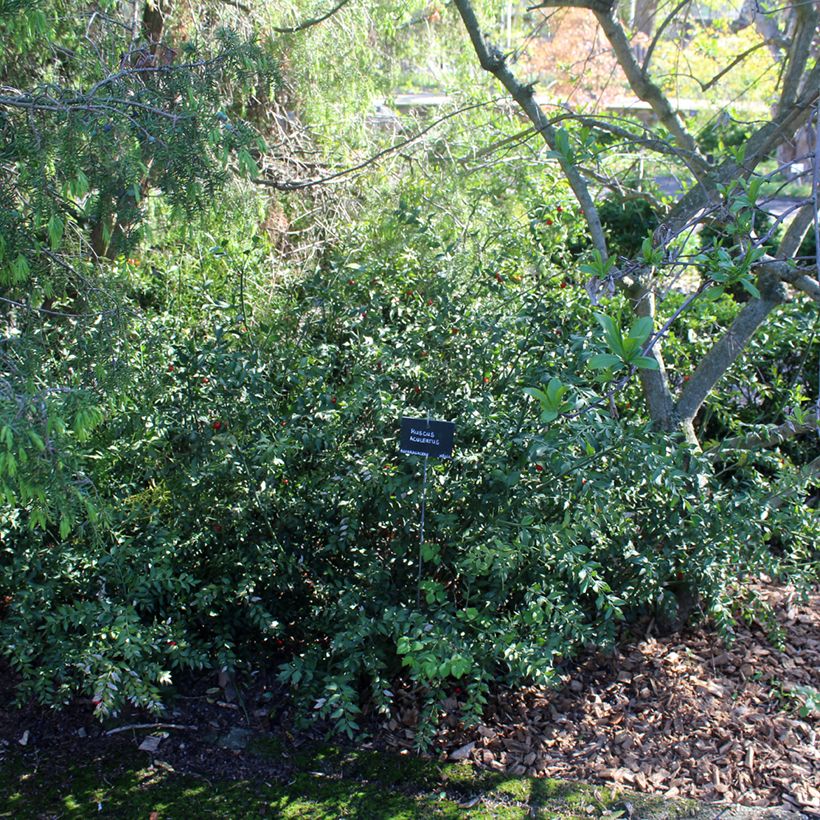

Plant habit
Flowering
Foliage
Botanical data
Ruscus
aculeatus
Asparagaceae - Liliaceae
Butcher's Broom, Box Holly, Knee Holly, Knee Holm, Knee Hull, Kneeholy, Pettigree, Pettigrue, Prickly box, Shepherd's Myrtle, Wild Myrtle
Mediterranean
Other Shrubs A to Z
Planting and care
Plant the Butcher's Broom in humus-rich, preferably chalky, dry to moist but well-drained soil, as the plant is sensitive to excessive moisture in winter and this can harm its hardiness. This shrub will thrive in shade or partial shade, away from the scorching rays of the sun. It requires no particular maintenance, except for regular watering during the first year of planting. It will spread through its rootstocks to form large clumps after three years, without becoming invasive. Divide the clumps after five years, especially in cases of exceptional frost. It is relatively hardy, so in cooler areas it should be protected from the coldest winds.
Planting period
Intended location
Care
-
, onOrder confirmed
Reply from on Promesse de fleurs
Evergreen shrubs
Haven't found what you were looking for?
Hardiness is the lowest winter temperature a plant can endure without suffering serious damage or even dying. However, hardiness is affected by location (a sheltered area, such as a patio), protection (winter cover) and soil type (hardiness is improved by well-drained soil).

Photo Sharing Terms & Conditions
In order to encourage gardeners to interact and share their experiences, Promesse de fleurs offers various media enabling content to be uploaded onto its Site - in particular via the ‘Photo sharing’ module.
The User agrees to refrain from:
- Posting any content that is illegal, prejudicial, insulting, racist, inciteful to hatred, revisionist, contrary to public decency, that infringes on privacy or on the privacy rights of third parties, in particular the publicity rights of persons and goods, intellectual property rights, or the right to privacy.
- Submitting content on behalf of a third party;
- Impersonate the identity of a third party and/or publish any personal information about a third party;
In general, the User undertakes to refrain from any unethical behaviour.
All Content (in particular text, comments, files, images, photos, videos, creative works, etc.), which may be subject to property or intellectual property rights, image or other private rights, shall remain the property of the User, subject to the limited rights granted by the terms of the licence granted by Promesse de fleurs as stated below. Users are at liberty to publish or not to publish such Content on the Site, notably via the ‘Photo Sharing’ facility, and accept that this Content shall be made public and freely accessible, notably on the Internet.
Users further acknowledge, undertake to have ,and guarantee that they hold all necessary rights and permissions to publish such material on the Site, in particular with regard to the legislation in force pertaining to any privacy, property, intellectual property, image, or contractual rights, or rights of any other nature. By publishing such Content on the Site, Users acknowledge accepting full liability as publishers of the Content within the meaning of the law, and grant Promesse de fleurs, free of charge, an inclusive, worldwide licence for the said Content for the entire duration of its publication, including all reproduction, representation, up/downloading, displaying, performing, transmission, and storage rights.
Users also grant permission for their name to be linked to the Content and accept that this link may not always be made available.
By engaging in posting material, Users consent to their Content becoming automatically accessible on the Internet, in particular on other sites and/or blogs and/or web pages of the Promesse de fleurs site, including in particular social pages and the Promesse de fleurs catalogue.
Users may secure the removal of entrusted content free of charge by issuing a simple request via our contact form.
The flowering period indicated on our website applies to countries and regions located in USDA zone 8 (France, the United Kingdom, Ireland, the Netherlands, etc.)
It will vary according to where you live:
- In zones 9 to 10 (Italy, Spain, Greece, etc.), flowering will occur about 2 to 4 weeks earlier.
- In zones 6 to 7 (Germany, Poland, Slovenia, and lower mountainous regions), flowering will be delayed by 2 to 3 weeks.
- In zone 5 (Central Europe, Scandinavia), blooming will be delayed by 3 to 5 weeks.
In temperate climates, pruning of spring-flowering shrubs (forsythia, spireas, etc.) should be done just after flowering.
Pruning of summer-flowering shrubs (Indian Lilac, Perovskia, etc.) can be done in winter or spring.
In cold regions as well as with frost-sensitive plants, avoid pruning too early when severe frosts may still occur.
The planting period indicated on our website applies to countries and regions located in USDA zone 8 (France, United Kingdom, Ireland, Netherlands).
It will vary according to where you live:
- In Mediterranean zones (Marseille, Madrid, Milan, etc.), autumn and winter are the best planting periods.
- In continental zones (Strasbourg, Munich, Vienna, etc.), delay planting by 2 to 3 weeks in spring and bring it forward by 2 to 4 weeks in autumn.
- In mountainous regions (the Alps, Pyrenees, Carpathians, etc.), it is best to plant in late spring (May-June) or late summer (August-September).
The harvesting period indicated on our website applies to countries and regions in USDA zone 8 (France, England, Ireland, the Netherlands).
In colder areas (Scandinavia, Poland, Austria...) fruit and vegetable harvests are likely to be delayed by 3-4 weeks.
In warmer areas (Italy, Spain, Greece, etc.), harvesting will probably take place earlier, depending on weather conditions.
The sowing periods indicated on our website apply to countries and regions within USDA Zone 8 (France, UK, Ireland, Netherlands).
In colder areas (Scandinavia, Poland, Austria...), delay any outdoor sowing by 3-4 weeks, or sow under glass.
In warmer climes (Italy, Spain, Greece, etc.), bring outdoor sowing forward by a few weeks.

































